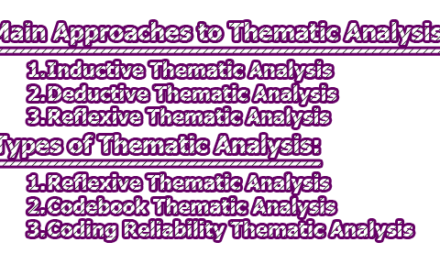In social science research, constructs refer to theoretical concepts or ideas that cannot be directly observed or measured. Instead, they are inferred from observable behaviors, events, or other indicators. Constructs are used to develop theories, hypotheses, and models that help to explain and predict social phenomena. In this article, we will explore the concept of research constructs, provide examples of commonly used constructs, and discuss issues related to constructing validity and reliability.
What is a Research Construct?
A research construct is an abstract idea or concept that cannot be directly observed or measured. Constructs are used in social science research to help explain and predict human behavior, attitudes, and emotions. Constructs are often complex and multifaceted and can be difficult to define precisely. Instead, researchers develop operational definitions of constructs, which are statements that describe how the construct will be measured or observed.
Operational definitions of constructs are important because they help to ensure that researchers are measuring the same thing in the same way. For example, if two researchers are studying the construct of anxiety, they may use different measures or scales to assess anxiety. To ensure that their results are comparable, they must use the same operational definition of anxiety, which describes how the construct will be measured or observed.
Examples of Research Constructs:
There are many constructs that are commonly used in social science research. Some of the most common constructs include:
- Intelligence: Intelligence is a construct that refers to a person’s ability to learn, reason, and solve problems. Intelligence can be measured using IQ tests, cognitive ability tests, and other measures.
- Self-esteem: Self-esteem is a construct that refers to a person’s overall evaluation of their own worth or value. Self-esteem can be measured using self-report questionnaires or other measures.
- Motivation: Motivation is a construct that refers to a person’s drive or desire to achieve a particular goal or outcome. Motivation can be measured using self-report questionnaires or other measures.
- Depression: Depression is a construct that refers to a persistent feeling of sadness or loss of interest in activities. Depression can be measured using self-report questionnaires, clinical interviews, and other measures.
- Personality: Personality is a construct that refers to a person’s characteristic patterns of thoughts, feelings, and behaviors. Personality can be measured using self-report questionnaires, interviews, and other measures.
- Attitudes: Attitudes are constructs that refer to a person’s evaluations or beliefs about particular objects, people, or events. Attitudes can be measured using self-report questionnaires or other measures.
Construct Validity and Reliability:
Construct validity is a critical concept in social science research. Construct validity refers to the degree to which a measure or test accurately measures the construct it is intended to measure. In other words, a measure or test is constructed as valid if it measures what it is supposed to measure.
Construct validity can be assessed using several different methods. One method is to examine the content validity of a measure or test. Content validity refers to the extent to which a measure or test covers all the relevant aspects of the construct. For example, a measure of depression should include items that assess a range of symptoms, such as feelings of sadness, loss of interest, and changes in appetite or sleep.
Another method for assessing construct validity is to examine the convergent and discriminant validity of a measure or test. Convergent validity refers to the degree to which a measure or test is positively correlated with other measures that are known to measure the same construct. For example, a measure of self-esteem should be positively correlated with other measures that assess positive self-evaluations. Discriminant validity refers to the degree to which a measure or test is not correlated with measures that are known to measure different constructs. For example, a measure of self-esteem should not be correlated with measures that assess depression or anxiety, as these are separate constructs.
Reliability is another important concept in social science research. Reliability refers to the consistency or stability of a measure or tests over time, across different raters, or under different conditions. A measure or test is considered reliable if it produces consistent results each time it is administered.
There are several methods for assessing the reliability of a measure or test. One method is to examine the test-retest reliability of the measure or test. Test-retest reliability refers to the degree to which a measure or test produces consistent results when administered to the same individuals on two or more occasions. For example, if a measure of depression produces similar scores for the same individual over time, then the measure is considered to have good test-retest reliability.
Another method for assessing reliability is to examine inter-rater reliability. Inter-rater reliability refers to the degree to which different raters or observers produce consistent results when administering a measure or test. For example, if two clinicians independently assess the same patient using a diagnostic interview for depression and produce similar results, then the measure is considered to have good inter-rater reliability.
Research Construct vs Variable:
Although constructs and variables are related concepts, they are not the same thing. A variable is a measurable attribute or characteristic that can take on different values. For example, age, gender, and income are all variables that can be measured using numerical values or categories.
A research construct, on the other hand, is an abstract idea or concept that cannot be directly observed or measured. Constructs are inferred from observable behaviors, events, or other indicators. Constructs can be operationalized into variables, which are used to measure or observe the construct.
For example, the construct of anxiety can be operationalized into several variables, such as heart rate, respiratory rate, and self-reported feelings of nervousness or tension. Each of these variables can be measured using numerical values or categories and can be used to assess the construct of anxiety.
It is apparent that research constructs are abstract ideas or concepts that are used in social science research to explain and predict human behavior, attitudes, and emotions. Constructs cannot be directly observed or measured but can be operationalized into variables, which are used to measure or observe the construct. Construct validity and reliability are critical concepts in social science research, and refer to the accuracy and consistency of measures or tests that are used to assess constructs. By using valid and reliable measures, researchers can ensure that their results are accurate and meaningful, and can contribute to our understanding of human behavior and social phenomena.
References:
- Bagozzi, R. P. (2017). Measurement in marketing research: An alternative paradigm. Marketing Science, 36(3), 293-303.
- Borsboom, D., Mellenbergh, G. J., & van Heerden, J. (2004). The concept of validity. Psychological Review, 111(4), 1061-1071.
- Cronbach, L. J., & Meehl, P. E. (1955). Construct validity in psychological tests. Psychological Bulletin, 52(4), 281-302.
- Diamantopoulos, A., & Siguaw, J. A. (2006). Formative versus reflective indicators in organizational measure development: A comparison and empirical illustration. British Journal of Management, 17(4), 263-282.
- Furr, R. M., & Bacharach, V. R. (2014). Psychometrics: An introduction. Sage Publications.
- Hair, J. F., Black, W. C., Babin, B. J., & Anderson, R. E. (2010). Multivariate data analysis (Vol. 7). Upper Saddle River, NJ: Prentice Hall.
- Kline, R. B. (2015). Principles and practice of structural equation modeling. Guilford publications.
- Nunnally, J. C. (1978). Psychometric theory (2nd ed.). New York, NY: McGraw-Hill.
- Shadish, W. R., Cook, T. D., & Campbell, D. T. (2002). Experimental and quasi-experimental designs for generalized causal inference. Houghton Mifflin.
- Streiner, D. L. (2003). Starting at the beginning: An introduction to coefficient alpha and internal consistency. Journal of Personality Assessment, 80(1), 99-103.

Library Lecturer at Nurul Amin Degree College










